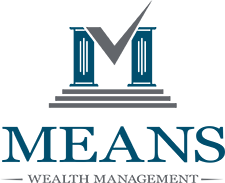SECURE Act 2.0 – What Savers Need to Know
On December 29, 2022, President Joe Biden signed into law the SECURE Act 2.0 (the 2.0 Act) as part of the $1.7 trillion, 4,155-page 2023 omnibus spending bill.
The 2.0 Act is referred to as the “SECURE Act 2.0” because it builds off the original SECURE Act, which was passed by Congress in 2019. Like the not-quite-as-succinct sequel to a blockbuster movie, what the SECURE Act 2.0 lacks in a defining moment (see the 10-year payout provision of inherited IRAs in the original SECURE Act), it makes up for with the volume of changes. There are many things in the SECURE Act 2.0 that will impact workers, retirees and business, and these changes will be phased in over the next several years.
So, what does the 2.0 Act mean for those near or in retirement? While not exhaustive, below are some of the more notable changes in the 2.0 Act affecting those near or in retirement.
Increased Required Minimum Distribution (RMD) Age
Effective January 1, 2023, the RMD age increased from age 72 to age 73; this increased RMD age affects those born between 1951 and 1959. If you turned 72 prior to January 1, 2023, you are still required to begin taking your RMDs as scheduled; however, if you turned or will turn 72 in 2023 and have already scheduled a withdrawal, you may wish to consider delaying that withdrawal until 2024.
The RMD age increases again in 2033, this time to age 75, which affects those born 1960 and later.
Reduced Penalty for Missed RMDs
Under the 2.0 Act, the tax penalty for missing a RMD is now reduced from 50% of the amount that should have been withdrawn to 25%. This penalty is further reduced to 10% if the error is promptly corrected.
Higher Catch-up Contributions in Retirement Accounts
Effective in 2024, the current $1,000 IRA catch-up contribution limit will be indexed for inflation.
Then, in 2025, individuals ages 60 through 63 will be able to make increased catch-up contributions to their workplace retirement plan (401(k) or similar); this amount will be $10,000 or 150% of the age 50+ catch-up amount indexed for inflation, whichever is greater. After 2025, the increased amounts will be indexed for inflation.
Finally, in 2025, individuals ages 60 through 63 will be able to make increased catch-up contributions to their SIMPLE IRAs; this amount will be $5,000 or 150% of the age 50+ catch-up amount indexed for inflation, whichever is greater. After 2025, the increased amounts will be indexed for inflation.
New Roth Contributions Options / Requirements
Effective this year, employers can now match employee retirement contributions by making these contributions either pre-tax or Roth (after-tax).
Also effective this year, individuals may now make Roth contributions to SEP and SIMPLE IRAs.
Employers will need to determine if they want to permit the above options and, once they do, custodians and payroll providers will need to update their systems to accommodate these changes; accordingly, it may take some time before the above can be implemented.
Beginning in 2024, any catch-up contributions to qualified retirement plans made by people age 50+ and who have total wages greater than $145,000 must be Roth (after-tax).
Also in 2024, designated Roth accounts in qualified retirement accounts will no longer have a required minimum distribution
Increased Qualified Charitable Distribution (QCD) Amounts
Beginning in 2024, the maximum QCD will be indexed for inflation from the current $100,000 amount. There is no change to the 70 ½ age in which an individual can start making QCDs.
The SECURE Act 2.0 contains many provisions that savers and retirees need to be aware of and potentially incorporate into their financial plan. Whether you are in retirement, nearing retirement, or have thirty years to go, we are ready to help you as you assess the impact of the above changes on your overall financial plan. If you have any questions or need clarification regarding the above and/or your financial plan, please don’t hesitate to reach out to us.
In addition, the 2.0 Act includes many provisions that affect employers, employees, and workplace retirement plans in general, which we have outlined in a separate article that you can find on our website here.


